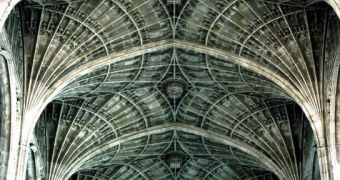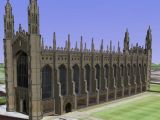Some of the oldest buildings have curious design solutions to help them defy gravity, like the arches. Modern architects should learn old tricks, since according to modern regulations, such buildings should have collapsed a long time ago.
But they didn't. In 1675, Robert Hooke, an English polymath who played an important role in the scientific revolution, through both experimental and theoretical work, formulated a dictum on structural forces: "As hangs the flexible line, so but inverted will stand the rigid Arch."
This is still the basis for understanding both suspension bridges and masonry buildings. John Ochsendorf, assistant professor of architecture at MIT, says today's architects can learn a lot from studying exactly why and under what loads the flexible line will keep hanging and the rigid arch will keep standing.
One of the most intriguing buildings he analyzed is King's College Chapel (completed in 1515), which spans 42 feet and hovers 84 feet above the pavement, despite the fact that its building blocks are only four inches thick.
"You'd be hard-pressed to find someone in the world (today) who could sign off on this and say this is a safe structure," he said. "If some architect, maybe an MIT graduate, proposed this geometry?almost no building code in the world would allow it to be built. And yet it's been standing for 500 years."
Other surprising buildings were the suspended bridges that Spanish conquistadors in Peru discovered, built entirely out of vegetable fiber, that the Incas used to tie together their vast empire.
It seems the soldiers could not imagine how such a building could be standing and they were so terrified by the apparent lack of resistance, that they crawled over them on hands and knees even as their horses and cannons passed across in safety.
Ochsendorf has been developing interactive tools to explore the geometries of different structures, such as the seemingly impossible arches, or the bridges that relied on tension rather than compression. With the new computer applications, engineers can move building elements around virtually, imitating the ravages of gravity and show at what point a particular configuration becomes unstable.
He believes that architects and engineers around the world still have a lot to learn from older masonry buildings, built with traditional techniques and materials, which survived earthquakes and gravity far better than modern ones, as proven in the World War II bombardments in Europe, when Gothic cathedrals refused to go down.

 14 DAY TRIAL //
14 DAY TRIAL // 
